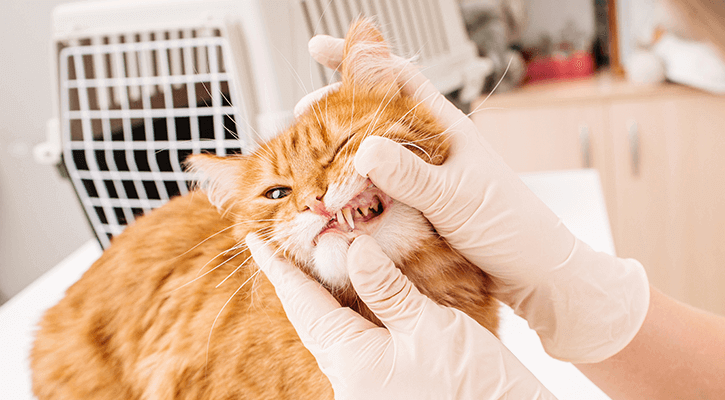Celebrating National Pet Dental Health Month
Over 85% of dogs and cats have some type of periodontal disease. In fact, this preventable disorder is the number one health problem diagnosed in small animals. Here is our simple, four step plan to greater health for your pets.

1. Annual Exam
It begins with an annual oral examination by your veterinarian. A dental exam and cleaning (dental prophylaxis) may be required, including removal of plaque above and below the gum lining and polishing. Problems in their early stages can be diagnosed and treated. Many dogs age four and older may need to be examined more frequently.
2. Daily Brushing
This is why you’ve got opposable thumbs and your pet doesn’t. Buy a special pet toothbrush and toothpaste and do what’s right – brush their teeth daily. Start when they’re young to get them used to it, but it’s never too late to begin proper home dental care. Reward the animal with a treat; they’ll associate it with the brushing and won’t resist as much.
3. The Seal of Acceptance
Next, address your pet’s diet. Look for the “Seal of Acceptance of the Veterinary Oral Health Council” on foods to determine if they meet standards for plaque and tartar control. Dog biscuits will remove some plaque but cannot clean below the gum line and will not prevent periodontal disease. There is no substitute for daily brushing.
4. Regular Exams
Regular checkups are imperative to ensure good oral health. Your veterinarian will monitor your pet’s progress and look for any signs of advanced stages of gum inflammation and periodontal disease.




